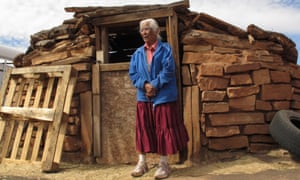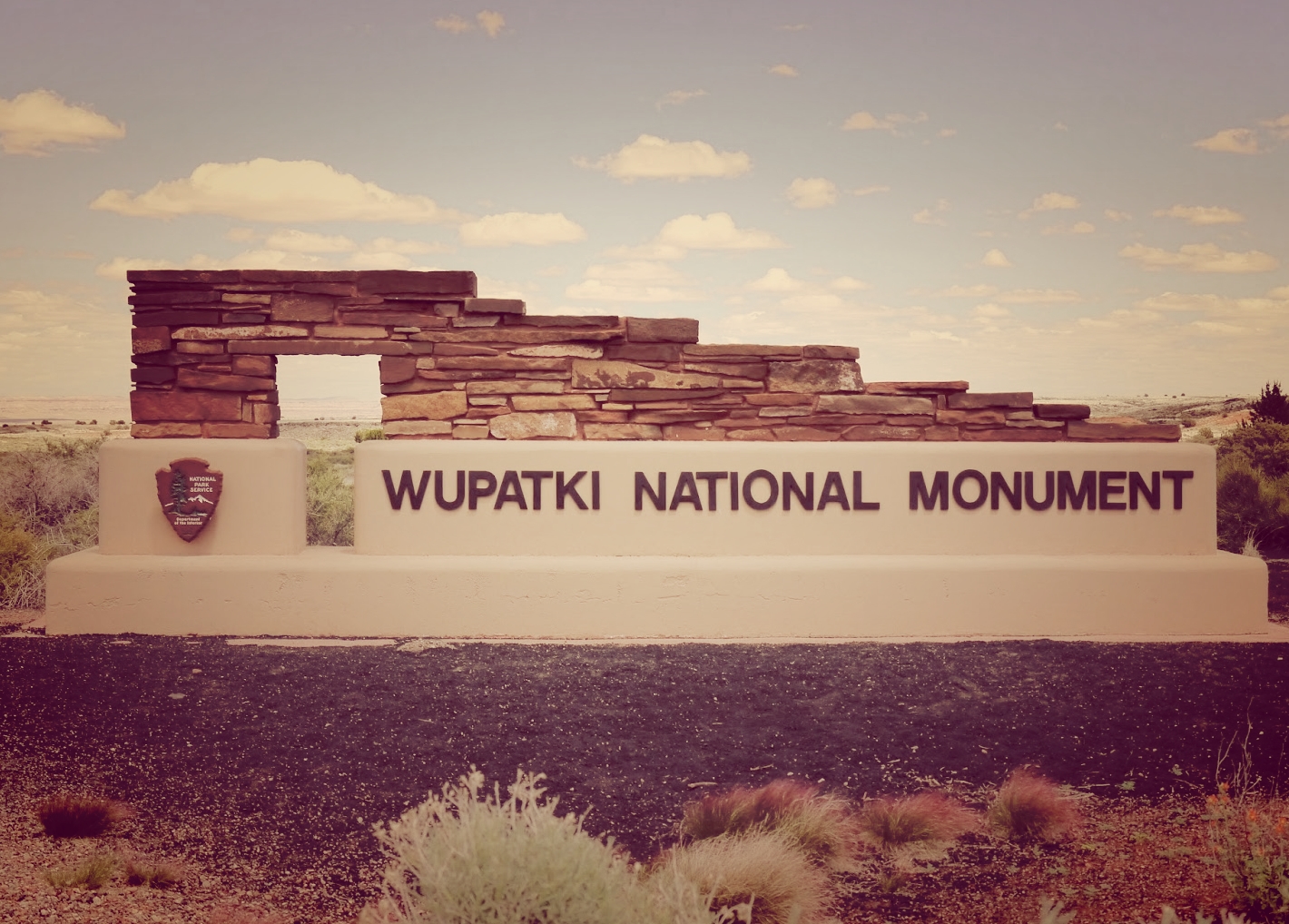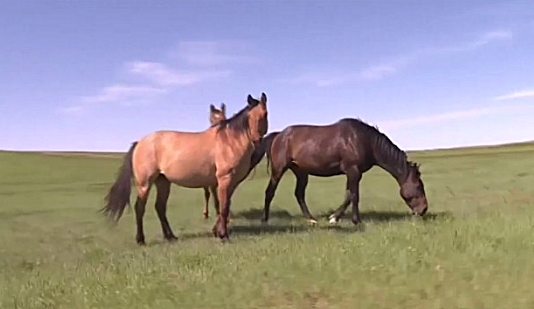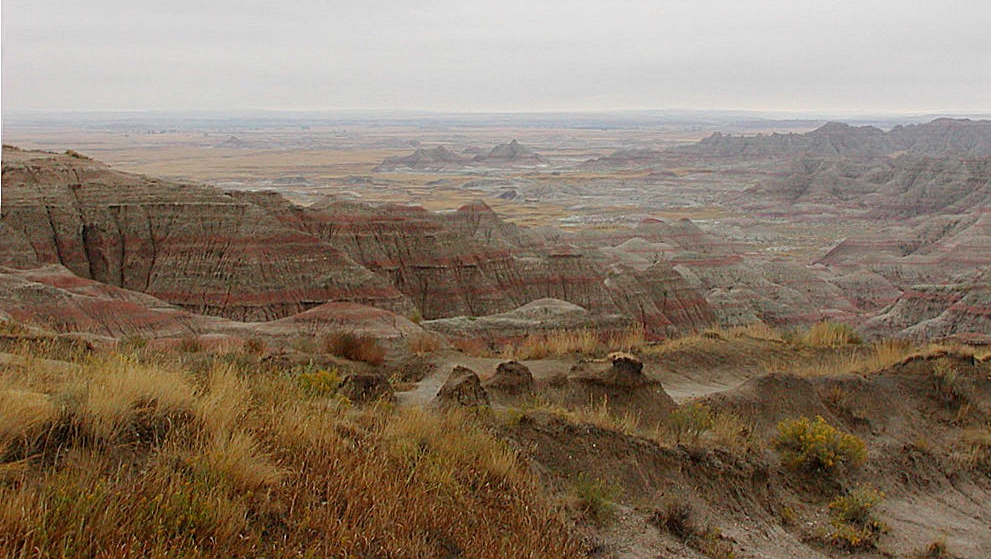Like vultures, feds wait for last Navajo to die at Wupatki National Monument
Navajo family fights to stay on monument land in northern Arizona.
When 89-year-old Stella Peshlakai Smith dies, the Navajo presence at Wupatki National Monument will end forever.

“Slowly, the Navajo families left Wupatki National Monument too, either voluntarily or under pressure by the national park service, which sought to eliminate private use of the public land it managed. Only one Navajo woman remains.”
Slowly, the Navajo families left Wupatki National Monument too, either voluntarily or under pressure by the national park service, which sought to eliminate private use of the public land it managed. Only one Navajo woman remains.
When 89-year-old Stella Peshlakai Smith dies, her residency permit dies with her, ending forever the Navajo presence at Wupatki.
The Peshlakais have vowed to fight for the land surrounded by the Little Colorado River valley, snow-capped mountains and towering mesas, where their sheep once grazed freely. Support for the family is mounting among state and tribal officials, but it’s up to Congress to decide whether they can stay.
“This family has had a homestead there for generations and generations, years, and we want that to be made right,” Navajo Nation lawmaker Walter Phelps said.
Smith estimates that dozens of extended members of her family would move back if given the chance.
An exhibit at the Wupatki visitors center highlights the struggle between the Peshlakais and the park service, and hints at the broader story of Native American ancestral lands across the country that have become public property.
One 1970 letter on display is from the park service to a former US senator from Arizona. It says: “At no time have the Navajos who grazed within the monument had any title in the land. … In the absence of appropriate legislation, these lands could not be surrendered to the Peshlakai family. We believe such legislation would not be in the public interest.”
It’s the same position that monument Superintendent Kayci Cook Collins takes today. She said tribal members connected to Wupatki are able to conduct ceremonies there, and the Peshlakai family can visit Smith’s homestead. But reserving property for the Peshlakais could invite other tribes, whose ancestors built pueblos and traded goods at Wupatki, to lay claim to the land.
“In general, units of the national park service are not managed to hold private residences on public land,” she said. “The situation the national park service tried to be sensitive to does not exist for the other families.”
Smith was born at Wupatki a month before it became a national monument, and was raised there by her father, Clyde Peshlakai, who acted as the monument’s custodian. Clyde Peshlakai is credited with discovering the Wupatki “blowhole”, a geologic feature that forces cold air from the ground and sucks in warm air. His burial site is a two-room stone house visible from the road that loops around the monument.
Along the rugged road that leads to Smith’s home are reminders of Navajo homesteads: old sheep corrals, wooden logs pitched for a sweat lodge and a traditional Navajo dwelling where Smith’s great-grandfather, Peshlakai Etsidi, is buried. Etsidi was among thousands of Navajos who endured cold, disease and starvation in the US government’s attempt to relocate them to Bosque Redondo near Fort Sumner, New Mexico, in what’s known as the Long Walk.
Etsidi returned to northern Arizona around 1870 after the Navajos signed a treaty with the federal government that defined a reservation for the tribe.
The reservation did not include land that would become Wupatki National Monument, where Etsidi and other Navajos resettled. Their children made a playground of its low-lying grasslands, sandstone outcroppings and scrub brush. Herding sheep, a staple of Navajo tradition and a sign of wealth, was an everyday task.
But the park service feared overgrazing and asked Navajos to move their sheep off the monument at times and imposed herd limits. Members of the Peshlakai family said they were forced to move beyond the Little Colorado River.
Elsie Tohannie said she was in her late teens or early 20s when a former monument superintendent told her the family couldn’t live there.
Now 82, she resides with her family in Flagstaff but has vivid memories of Wupatki. She moves her hands as if creating scenes of the landscape that her family says is the source of countless stories of her childhood.
“Absolutely it bothers me,” she said of leaving the land where she grew up. “It’s something no one can recognize, the pain.”
Another family member, James Peshlakai, has no desire to return to a place under park service control. He was born about a quarter-mile from the Wupatki visitor center in 1945. He recalls his mother, Katherine, being evicted while he was in school in Flagstaff and hitchhiking to the monument to find her alone with her sheep. He said he and his siblings fashioned a shelter from tree branches and blankets that they lived in during the winter before going elsewhere.
By that time, Katherine Peshlakai had separated from Clyde Peshlakai. James Peshlakai said he later intervened when the park service asked his father to sign a land-use permit, but the elder Peshlakai declined, saying “I want this land for my children.”
James Peshlakai’s daughter, Democratic state representative Jamescita Peshlakai, has introduced a resolution in the Legislature for Arizona to declare its support of the Peshlakai family and their continued residency within the national monument. The Navajo Nation Council has passed a similar resolution.
“Sadly, it’s a story typical of every Native American family in the Americas,” she said.
No request to allow the Peshlakais to live at the monument has been submitted to Congress, but the family has an advocate in Democratic U.S. Rep. Ann Kirkpatrick. The congresswoman said that while federal land-management policies have evolved over the years, “we cannot forget that the people who have emerged with the land are inseparable.”
Across the West, few Native Americans remain on lands that have become iconic tourist destinations managed by the federal government. The Grand Canyon set aside a housing complex for Havasupai tribal members displaced by the national park. Navajos also live at Canyon de Chelly National Monument near Chinle, but the land is Navajo-owned, and the monument is jointly managed by the tribe. The 38 sites in four states that make up the Nez Perce National Historical Park include reservation land.
Smith has a rare letter of authorization from the park service allowing lifetime residency at Wupatki. Her daughter, Helen Peshlakai Davis, gave up a right to pursue residency at the monument in exchange for land north of Flagstaff.
Davis said the park service didn’t fully explain what she was signing, and she contends the agreement should be invalidated. In Navajo belief, she is tied to Wupatki land because her umbilical cord is buried there beneath a sheep corral.
The park service believes the agreement should stand.
While the Peshlakai family once had free reign of the monument’s more than 35,000 acres, Smith now lives on a much smaller plot without the sheep she once had but with amenities like electricity and running water that she grew up without. Smith said any Navajo family who traces their ancestry to the clans that settled the area should be welcomed back.
“It belongs to them … everything that’s here,” Smith said through a Navajo interpreter.
Free Range Report Admin.



